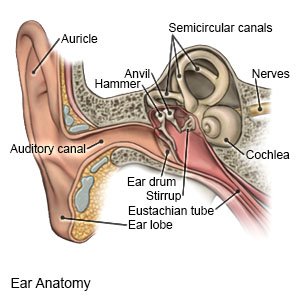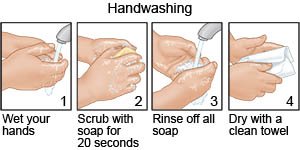Ear Polyps in Children
Medically reviewed by Drugs.com. Last updated on Aug 4, 2025.
What are ear polyps?
An ear polyp is a growth on the inside of your child's ear canal. Ear polyps may be caused by chronic ear infections or a cholesteatoma. A cholesteatoma is a skin cyst inside the ear.
 |
What are other signs and symptoms of ear polyps?
- Ear discharge that may be bloody or have pus
- Hearing loss
- Ear pain
How are ear polyps diagnosed?
Your child's healthcare provider will examine your child's ear and ask about his or her symptoms. He or she may also ask if your child has had ear infections or has other medical conditions.
How are ear polyps treated?
Treatment depends on the cause of your child's ear polyp. Your child may need any of the following:
- Antibiotics help treat a bacterial infection.
- Steroids help decrease swelling and pain.
- NSAIDs , such as ibuprofen, help decrease swelling, pain, and fever. This medicine is available with or without a doctor's order. NSAIDs can cause stomach bleeding or kidney problems in certain people. If your child takes blood thinner medicine, always ask if NSAIDs are safe for him or her. Always read the medicine label and follow directions. Do not give these medicines to children younger than 6 months without direction from a healthcare provider.
- Acetaminophen decreases pain and fever. It is available without a doctor's order. Ask how much to give your child and how often to give it. Follow directions. Read the labels of all other medicines your child uses to see if they also contain acetaminophen, or ask your child's doctor or pharmacist. Acetaminophen can cause liver damage if not taken correctly.
- Surgery to remove the polyp may be needed if medicines do not treat the polyp.
What can I do to help my child manage or prevent an ear polyp?
- Wash your and your child's hands throughout the day. Use soap and water. You can use a hand sanitizer if soap and water are not available.

- Have your child lie with his or her infected ear facing down. This will allow any fluid to drain from the ear.
- Prevent swimmer's ear. Ask about ways to keep water out of your child's ears when he or she bathes or swims. Dry your child's ears completely after he or she swims or bathes. Gently wipe your child's outer ear with a soft towel or cloth. Do not put cotton swabs or other objects in your child's ears. These can scratch or damage your child's ear. They can also push ear wax deeper in and irritate the ear.
- If possible, breastfeed your baby. Your baby may be less likely to get an ear infection if he or she is breastfed. Do not give your child a bottle while he or she is lying down. This may cause liquid from the sinuses to leak into his or her eustachian tube.
- Keep your child away from cigarette smoke. Smoke can lead to an ear infection. Move your child away from a person who is smoking. If you currently smoke, do not smoke near your child. Ask your healthcare provider for information if you want help to quit smoking.
- Ask about vaccines your child may need. Vaccines may help prevent infections that can cause an ear infection. Have your child get a yearly flu vaccine as soon as recommended, usually in September or October. Ask about other vaccines your child needs and when he or she should get them.

When should I call my child's doctor?
- Your child's symptoms do not get better, or they get worse.
- You have questions or concerns about your child's condition or care.
Care Agreement
You have the right to help plan your child's care. Learn about your child's health condition and how it may be treated. Discuss treatment options with your child's healthcare providers to decide what care you want for your child. The above information is an educational aid only. It is not intended as medical advice for individual conditions or treatments. Talk to your doctor, nurse or pharmacist before following any medical regimen to see if it is safe and effective for you.© Copyright Merative 2025 Information is for End User's use only and may not be sold, redistributed or otherwise used for commercial purposes.
Further information
Always consult your healthcare provider to ensure the information displayed on this page applies to your personal circumstances.
